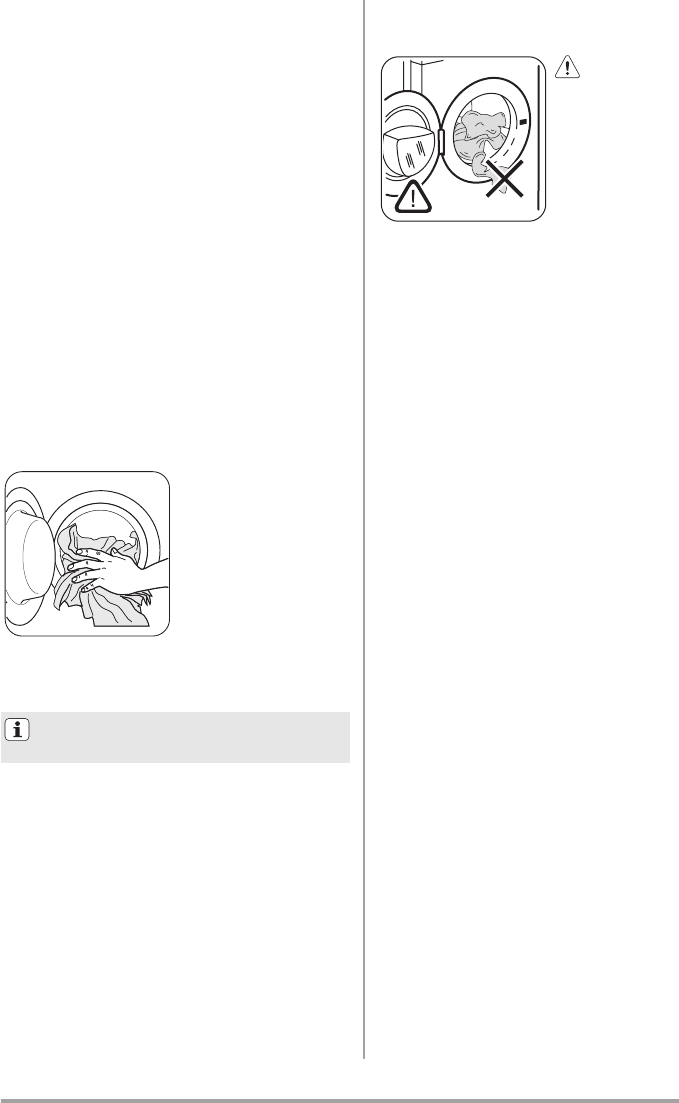
Grass: soap lightly and treat with bleach (whites and fast
coloureds only).
Ball point pen and glue: moisten with acetone
1)
, lay the
garment on a soft cloth and dab the stain.
Lipstick: moisten with acetone as above, then treat stains
with methylated spirits. Treat any residual marks with
bleach.
Red wine: soak in water and detergent, rinse and treat with
acetic or citric acid, then rinse. Treat any residual marks
with bleach.
Ink: depending on the type of ink, moisten the fabric first
with acetone
1)
, then with acetic acid; treat any residual
marks on white fabrics with bleach and then rinse thor-
oughly.
Tar stains: first treat with stain remover, methylated spirits
or benzine, then rub with detergent paste.
Open the door by carefully pulling the door handle
outwards
Load the laundry
Place the laundry in the
drum, one item at a time,
shaking them out as much
as possible.
Maximum Loads
Recommended loads are indicated in the «Wash-
ing Programmes».
General rules:
• Cotton, linen: drum full but not too tightly packed;
• Synthetics: drum no more than half full;
• Delicate fabrics and woollens: drum no more than one
third full.
Close the door gently
Warning! Make sure
that any fabrics were
not trapped when closing
the door.
Detergents and additives
Good washing results also depend on the choice of deter-
gent and use of the correct quantities to avoid waste and
protect the environment.
Although biodegradable, detergents contain substances
which, in large quantities, can upset the delicate balance
of nature.
The choice of detergent will depend on the type of fabric
(delicates, woollens, cottons, etc.), the colour, washing
temperature and degree of soiling.
All commonly available washing machine detergents may
be used in this appliance:
• powder detergents for all types of fabric,
• powder detergents for delicate fabrics (40°C max) and
woollens,
• liquid detergents, preferably for low temperature wash
programmes (60°C max) for all types of fabric, or spe-
cial for woollens only.
Quantity of detergent to be used
The type and quantity of detergent will depend on the type
of fabric, load size, degree of soiling and hardness of the
water used.
For the quantity of detergent, refer always to what is writ-
ten on the product packing.
Use less detergent if:
• you are washing a small load,
• the laundry is lightly soiled,
• large amounts of foam form during washing.
Degrees of water hardness
Water hardness is classified in so-called “degrees” of
hardness. Information on hardness of the water in your
area can be obtained from the relevant water supply com-
pany, or from your local authority.
1) do not use acetone on artificial silk.
11


















